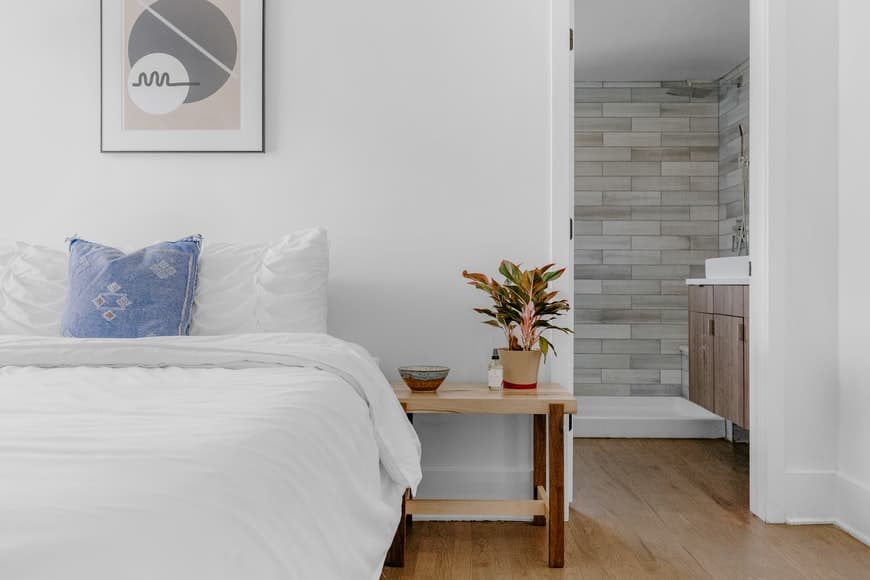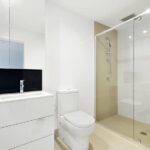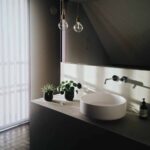Painting is both a demanding and rewarding task.
It is demanding in both the physical and mental efforts involved in ensuring you have made the right choices. For example, you will need to figure out the rooms to be painted and which color would be appropriate for each of them.
You also need a budget for the paints and even the contract if you intend to hire a painter.
One of the primary considerations in selecting the best paint for your room. Typically, you will have two primary choices to choose from; satin and flat paints.
Both satin and flat are popular options. They also have their pros and cons that make them ideal for a variety of uses.
But their main distinctive feature is their sheen or shine. Before figuring out what would happen if the two options were mixed, learn what each of them means.
What is Satin Paint?
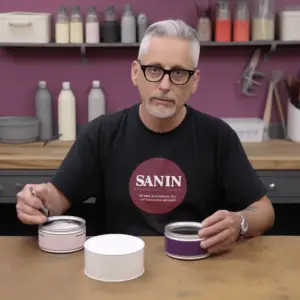
Satin paint is often called satinwood. This type of paint is famous for its velvety feel and pretty luster.
However, its sheen is somehow higher than eggshell, a characteristic that makes them more reflective.
In addition, it can often appear glossy or even flat depending on the lighting conditions in the room.
Satin finishes are known to be highly durable. This is why they are deemed effective and ideal for high-traffic areas such as the kid’s room, the bathroom, and the kitchen.
In addition, it is easy to clean with soapy water. And if possible, you should never try to wipe this type of paint with any abrasive scrubs. They can make the paint lose its shine.
What is Flat Paint?
When it comes to flat paints, you need to know that it is easy to use. In addition, it is a cheap option.
This type of paint provides a minimum reflective finish. Comparatively, it has more pigment than most other paints. It is also an excellent option since it dries faster than the rest.
It is often known as matte paint or concealer paint due to the kind of finish it offers. However, this type of paint does come with a few drawbacks. For example, it attracts dust, and it can easily get damaged when you clean it.
Thus, you may not be able to do any hard scrubbing while trying to remove the dust.
Due to this fact, you can use this type of paint in less-trafficked areas such as the ceilings, bedroom, etc.; it is, however, an excellent option for hiding wall blemishes.
It is not reflective paint. Thus, it will not highlight any wall imperfections in your room. That is why it is suitable for ceilings because most of them tend to have numerous defects.
| Satin vs. Flat paints | Satin Paints | Flat Paints |
| Shine | Slight sheen | Zero sheen |
| Cost | High | Low |
| Finish | Glossy | Velvety |
| Durability | Lasts long | Does not last long |
| Cleaning | Easily cleaned & Scrubbed | Can’t be scrubbed but can be lightly wiped |
| Moisture | Can resist moisture | Can’t resist moisture |
| Best usage areas | Preferred for high traffic zones, kitchen, bathrooms, and hardworking rooms, etc. | Basement, living room, storage areas, parking lots, etc. |
What About Mixing the Two Types of Paints?
If you mix flat paint with higher sheen paint, you will make an immediate finish.
Satin paint has higher luster, so if you want to get the look of a satin wall using flat paint, you will require gloss or semi-gloss sheen.
Can I Mix Flat And Satin Paint?
Yes, it is possible to mix two sheens. Ideally, it is okay to mix gloss and semi-gloss paint.
You can also incorporate satin and semi-gloss, eggshell and satin, and even flat and eggshell paints.
As stated earlier, satin paints are excellent when used in areas that will require regular cleaning.
On the other hand, flat paints are best used in areas that will not need any cleaning.
The resins found in satin give it an attractive appearance and a tough surface that can easily be scrubbed without getting damaged.
If you want to get a particular sheen, there is no rigid rule for blending. Thus, to make the paint flatter, you will need a higher pigment concentration. So, if you add more flat paint into the mixture, you will get a dull sheen.
How to Turn Satin into Flat Paint?
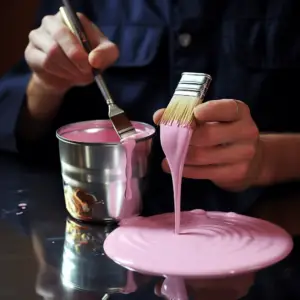
To start with, there is no known additive to achieve this. However, you can simply pour some gloss paint into the flat one and mix them properly.
The sheen of the flat paint will be increased. And if you want to achieve a medium glow, you can use equal parts of both paints.
But it is solely upon you to decide the level of sheen you would like to get. You can always try the final mixture by painting it on a clean wall, waiting for about two or three hours to dry, and checking if it serves the intended purpose well.
Conclusion
You can now use this info free of charge according to what you would want to achieve with these paints.
You have learned the pros linked of satin paints. They are usually durable; they can be easily scrubbed, are high in costs, and are suitable for most trafficked areas in your home.
On the other hand, flat paints are not easily cleaned. But you can just wipe out the dust or dirt without scrubbing because that will remove the paint.
You can use it in less trafficked areas like the basement, storage areas, or living room. However, they are affordable in many local and e-commerce stores.
You can still mix the satin and flat paints to get your preferred sheen. You need to be aware that the more you add the satin paint to the matte paint, the duller the gloss becomes.
As mentioned earlier, flat paints offer zero sheens. Thus, if you want to improve its luster, you can mix it with an unequal amount of satin. If the satin is more in the mixture, you will get a better sheen.
